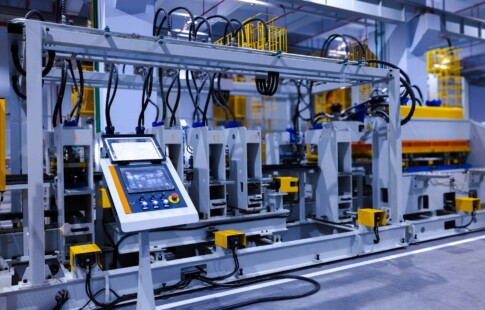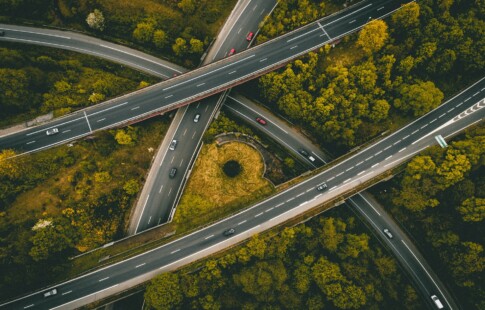
How Green Infrastructure Paves the Way for Renewable Energy Advances
We are reader-supported. When you buy through links on our site, we may earn affiliate commission.
Green infrastructure refers to a network of natural and semi-natural spaces. These include parks, green roofs and rain gardens. They provide environmental, economic and social benefits. In addition, they help manage rainwater, which reduces urban heat and improves air quality. These structures create sustainable urban environments.
It also supports renewable energy. For example, green spaces can host solar panels or wind turbines. They also enhance energy efficiency in buildings through green roofs. By integrating with renewable energy, these infrastructures help build a sustainable and energy-efficient future.
Understanding Green Infrastructure
It’s a strategic network of natural and artificial elements. These factors work together to provide environmental, social and economic benefits. Components include parks, green roofs, wetlands and urban forests. They also have permeable pavements and green streets.
In urban settings, examples include rooftop gardens and rainwater harvesting systems. These reduce heat and manage stormwater. In rural areas, these infrastructures often involve conserving natural landscapes. It includes creating buffer zones around water bodies and maintaining woodland corridors.
These elements work together to support ecosystems, improve air and water quality and enhance the quality of life for residents. They are also crucial in climate change mitigation and adaptation.
The Rise of Renewable Energy
Renewable energy sources include solar, wind, hydro, geothermal and biomass. These sources are sustainable and produce little to no greenhouse gases. For instance, solar energy — harnessed through photovoltaic panels — is rapidly growing. Experts predict its generation will double to 6% by 2024. This growth is due to advancements in solar technology and falling costs.
Wind energy from wind turbines is also expanding globally. Offshore wind farms are becoming more common. They harness stronger winds at sea. Meanwhile, hydroelectric power remains a significant renewable source. It uses flowing water to generate electricity.
On the other hand, geothermal energy from the earth’s heat is gaining attention for reliability. Meanwhile, people can use biomass energy from organic materials for heating and electricity. It’s evolving to become more efficient and environmentally friendly.
These renewable sources are crucial in the global shift towards sustainable energy. They fight climate change and reduce dependency on fossil fuels.
Intersection of Green Infrastructure and Renewable Energy
It significantly bolsters renewable energy systems. For instance, net-zero energy buildings exemplify this integration. These structures generate less or as much energy as they consume over a year. They often use solar panels, green roofs and energy-efficient designs. It reduces reliance on energy grids that are unreliable and vulnerable.
An example of successful integration is using green roofs on commercial buildings. These roofs can host solar panels, increasing their efficiency by lowering ambient temperatures. Another example is urban parks with integrated solar charging stations for electric vehicles.
Integrating natural water management with hydroelectric power is common in rural areas. It preserves ecosystems while generating clean energy. These integrations demonstrate the synergy between green infrastructure and renewable energy. They offer sustainable solutions that enhance energy security and resilience against grid disruptions or attacks.
Policy and Regulatory Frameworks
Globally, numerous policies support green infrastructure and renewable energy. The Paris Agreement is a crucial example. It encourages 196 nations to increase their use of renewable energy. Many countries have set targets to reduce carbon emissions and increase renewable energy usage.
The European Green Deal aims to make Europe climate-neutral by 2050 in the European Union. It includes strategies for boosting green cities and renewable energy. These policies have a profound impact. They drive investment in renewable technologies and green infrastructure projects.
They also create jobs in these sectors. This regulatory support is essential for the growth and development of sustainable practices. It helps in the transition toward a greener and more resilient energy future.
Benefits and Challenges
Green infrastructure and renewable energy bring numerous environmental, economic and social benefits. Environmentally, they reduce greenhouse gas emissions and mitigate climate change. They also improve air and water quality, maintaining biodiversity and ecosystem health.
Economically, these initiatives spur job creation in green technologies and sustainable construction. They offer long-term savings in energy costs and contribute to increased energy independence, which is vital for national security and economic stability.
Socially, implementing green spaces and renewable energy enhances public health by reducing pollution levels. It leads to fewer health-related expenses and better overall well-being. They also contribute to the development of more livable and sustainable communities, improving the quality of life for residents. Green spaces and cleaner energy sources create more pleasant and healthier living environments, fostering community and well-being.
However, the journey toward a greener future has its challenges. High upfront costs for setting up renewable energy systems and green infrastructure projects can be a significant barrier, particularly in economically constrained environments.
Technological limitations, especially in energy storage and efficiency, also need addressing. Additionally, bureaucratic and regulatory hurdles often slow down the adoption and implementation of these initiatives.
Overcoming these challenges requires a collaborative effort between governments, private sectors and communities, along with sustained investment in research and development. Educating the public and building widespread support ensure the successful adoption of green infrastructure and renewable energy practices.
Future Trends and Innovations
Emerging technologies in green infrastructure and renewable energy can revolutionize these fields. In green spaces, advancements include smart green roofs that can adapt to weather conditions and more efficient water management systems using IoT sensors.
In renewable energy, breakthroughs like perovskite solar cells promise higher efficiencies at lower costs. Innovations in wind turbine design are also making wind energy more feasible in varied environments.
The future of these sectors looks bright, with significant growth predicted. Solar energy, especially, sees substantial expansion thanks to decreasing costs and technical improvements. Wind energy — onshore and offshore — is also set to grow due to technological advances and policy support. As battery technology evolves, energy storage will become more efficient, making renewable energy sources more reliable.
Integrating green spaces with renewable energy will likely become more seamless and widespread. It will result from the global push for sustainability and climate change mitigation.
People expect to see more cities incorporating green infrastructure into urban planning and more reliance on renewable energy to power homes and businesses. This trend will create more sustainable, resilient and energy-efficient communities worldwide.
Share on
Like what you read? Join other Environment.co readers!
Get the latest updates on our planet by subscribing to the Environment.co newsletter!
About the author
Steve Russell
Steve is the Managing Editor of Environment.co and regularly contributes articles related to wildlife, biodiversity, and recycling. His passions include wildlife photography and bird watching.





